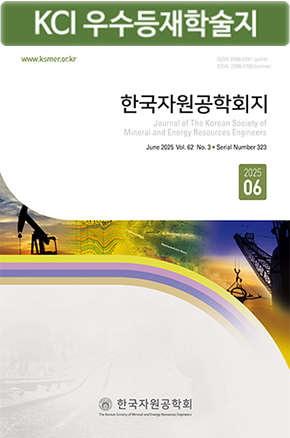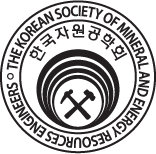Research Paper
Abstract
References
Information
The study compares the Ewha Campus Complex (ECC), an eco-friendly building, and a conventional reference building in terms of energy usage and electricity cost, in order to understand the general effects of energy cost savings due to the presence of eco-friendly buildings in university campuses. The result indicates that the electricity usage and associated cost per area of the ECC is indeed lower than that of the reference building. However, because of the relatively low utilization rate of the ECC in class activities, the advantage over the reference building seems to be limited at present. we compute the net present values (NPVs) of the energy cost savings from the differences between the electricity costs per area. Our NPV analysis shows that the discounted payback period (DPB) turns out to be larger than 60 years. We also analyze the eco-friendliness of the ECC by calculating the difference in greenhouse gas (GHG) emissions. The ECC shows lower GHG emissions per area by 13.5% than that of the reference building, which suggests that eco-friendly buildings can play a great role in the reduction of GHG emissions.
본 연구는 대학교에서 친환경건물 건설에 따른 에너지비용 절감의 효과를 분석하기 위하여 기존의 교내건물과 친환경건물인 ECC의 에너지이용과 전기요금을 비교하고, 이를 통하여 친환경건물의 에너지효율성, 비용효과성, 친환경성 효과를 분석해 보고자 한다. 에너지효율성 분석결과에 따르면 면적당 전력량 및 전력요금은 ECC가 기존건물보다 면적당 전력소비량과 전력요금이 낮다. 하지만, 실질적으로 학생의 수업에 활용된 공간에 대한 활용면적당 전력량 및 전력요금은 ECC가 기존건물보다 운영 상태에서 친환경성과 비용효과성의 우위가 낮아지므로 공간의 회전율을 높여 활용면적을 높이는 것이 필요하다. 비용 효과성을 살펴보고자 두 건물에서 사용된 전력량 및 전력요금의 차이를 이용하여 친환경건물에 의한 에너지 비용 절감의 순현재가치의 합을 계산해보면, 두 건물의 단위 면적당 전력요금의 차이는 할인율 5.5%일 때 60년 동안 466,000원 이상, 할인율 4.25%일 때 60년 동안 279,000원 이상 발생하여 60년 이상의 Discounted Payback Period(DPB)을 가지게 된다. 마지막으로 본 연구에서는 친환경건물의 에너지 절감에 따른 온실가스 배출량의 차이를 계산하여 ECC의 친환경성을 분석하였다. 두 건물의 단위면적당 온실가스 배출량을 분석한 결과, ECC의 단위면적당 온실가스 배출량이 기존건물에 비해 13.5% 감소하는 것으로 나타나 친환경건물의 건설이 국가 온실가스 배출량 감소에 큰 역할을 할 수 있음을 알 수 있다.
- Chosun Ilbo, “We shall achieve low carbon, green growth,” President Lee Myung-bak provides a new national vision on the 60th anniversary of the state founding (Aug. 16, 2008; Section A1).
- Chung, C.S., 2007, “Machinery Design Practices of Ewha Campus Center(ECC),” Korean Institute of Architectural Sustainable Environment and Building Systems, Vol. 1, No. 1, pp. 52-65.
- EWHA Voice, 2005, “Large companies eager to support and educate Ewha’s talented women,” http://evoice.ewha.ac.kr/ news/articleView.html?idxno=527.
- Hankyoreh, University campuses as energy guzzlers. (May 13, 2009; Section 14) (http://www.hani.co.kr/arti/society/environment/354567.html).
- Houghton, J.T., Meira Filho, L.G., Callander, B.A., Harris, N., Kattenberg, A. and Maskell, K., 1996, The Science of Climate Change, Cambridge University Press, Cambridg.
- IPCC, 1995, Second Assessment Report: Climate Change (AR2).
- IPCC, 2007, Fourth Assessment Report: Climate Change (AR4).
- Jeong, S.I and Nam, K.S., 2009, “A Study on Environment-Friendly Characteristics of Campus Buildings for Creating a Green Campus,” J. of the Korean Institute of Interior Design, Vol. 18, No. 6, pp. 221-228.
- Kim, J.W. and Nam, M.J., 2012, “A Review on Monitoring the Behavior and Saturation of CO2 at a CO2 Injection Field, Nagaoka, Japan,” J. of Korena Society for Geosystem Engineering, Vol. 49, No. 5, pp. 677-688.
- Kim, S.E., Wee, W.S., Lee, D.H. and Kim, S.K., “A Basic Study on the Cost Impact of Environment-Friendly Residential Buildings,” Proceedings of the Korean Institue of Building Construction Conference, The Korean Institute of Building Construction, Chungnam National University, Nov. 12th.
- Korea Development Institute, 2012, Introduction to the Framework and Analytic Methodology for Preliminary Feasibility Study of Business by Public Companies and Para-Government Agencies.
- Korea Energy Management Cooperation, www.kemco.or.kr.
- Korea Environmental Industry and Technology Institute, http://www.ecokitc.com.
- Korea Ministry of Government Legislation, Framework Act on Low Carbon, Green Growth, enforced on Apr. 14, 2010, Act No. 9931, Jan. 13, 2010.
- Kossoy, A. and Guigon, P., 2012, State and Trends of the Carbon Market 2012, World Bank.
- Kwon, O.S., 2007, Environmental Economics, 2nd Edition, Pakyoungsa, Seoul, pp. 327-335.
- Lee, K.S., Kim, J.W., Kim, H.T. and Son, H.A., 2012, “Potential Opportunities and Outlook of CO2 Enhanced Oil Recovery Associated with CCS,” J. of Korena Society for Geosystem Engineering, Vol. 49, No. 5, pp. 700-707.
- Li, T., Kim, J.H. and Kim, J.J., 2010, “A Study on the Cost Benefit Assessment in the Green Building Assessment,” Proceedings of the Korean Institue of Building Construction Conference, The Korean Institute of Building Construction, Chungnam National University, Nov. 12th.
- Ministry of Environment, 2012, A Guide for Greenhouse Gas and Energy Target Management System in Public Sectors.
- Park, W.K., Jeong, Y.K. and Lee, I.W., 2011, “Energy Management Technology for High Energy-Efficient Building,” Electronic and Telecommunications Trends, Vol. 26, No. 6, pp. 10-20.
- Ren, Z. E., Chen, Z. D. and Wang, X. M., 2011, “Climate change adaptation pathways for Australian residential buildings,” Building and Environment, Vol. 46, No. 11, pp. 2398-2412.
- Seoul Architecture Festival, http://citybuild.seoul.go.kr.
- Song, J. and Choi, Y., 2012, “Assessment of Rooftop Photovoltaic Potential in the Pukyong National University for Establishing a Green Campus,” J. of Korena Society for Geosystem Engineering, Vol. 49, No. 3, pp. 369-378.
- The Ewha Weekly, 2007, “Construction of the ECC has been progressed up to about 60%; Possibility of change in the structure of the main entrance,” http://inews.ewha.ac.kr/news/articleView.html?idxno=13033
- Wierzba, A. L., Morgenstern, M. A., Meyer, S. A., Ruggles, T. H. and Himmelreich, J., 2011, “A study to optimize the potential impact of residential building energy audits,” Energy Efficiency, Vol. 4, No. 4, pp. 587-597.
- Wrigley, E.A., 2010, Energy and the English Industrial Revolution, Cambridge University Press.
- 村田純一, 技術の哲學, 岩波書店, 2009.
- Publisher :The Korean Society of Mineral and Energy Resources Engineers
- Publisher(Ko) :한국자원공학회
- Journal Title :Journal of the Korean Society of Mineral and Energy Resources Engineers
- Journal Title(Ko) :한국자원공학회지
- Volume : 50
- No :2
- Pages :195-203
- DOI :https://doi.org/10.12972/ksmer.2013.50.2.195



 Journal of the Korean Society of Mineral and Energy Resources Engineers
Journal of the Korean Society of Mineral and Energy Resources Engineers








